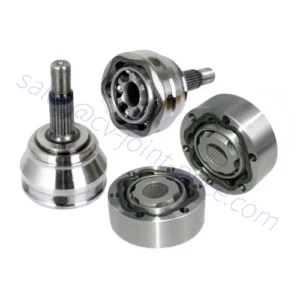In a normal feeling, a coupling is a product or system employed to join two different objects or factors with each other. Couplings are generally applied in numerous fields, such as mechanics, engineering, and electrical units, to be a part of or link diverse elements.
Listed here are a number of examples of couplings:
1. Mechanical Couplings: Mechanical couplings are used to join two rotating shafts in equipment and machines. Some widespread examples include:
a. Sleeve or Muff Coupling: This kind of coupling is made up of a hollow cylindrical sleeve that matches more than the ends of two shafts, with keys or splines furnishing a safe relationship.
b. Clamp or Split Coupling: Clamp couplings have two halves that are tightened close to the shaft ends using bolts or clamps, making a rigid relationship.
c. Equipment China coupling: Equipment couplings use interlocking tooth on the coupling halves to transmit torque while allowing for for a specified volume of misalignment.
two. Electrical Couplings: Electrical couplings are employed to join and transmit electrical indicators between different factors or units. Examples involve:
a. Wire Connectors: Wire connectors, such as twist-on wire nuts or China coupling crimp connectors, are utilized to sign up for electrical wires securely.
b. Plug and Socket Connectors: These couplings consist of male and feminine connectors that help the relationship and disconnection of electrical units, this sort of as ability cords or audio cables.
c. Terminal Blocks: Terminal blocks give a practical way to link multiple wires or electrical conductors in a manage panel or junction box.
three. Fluid Couplings: Fluid couplings use hydraulic concepts to transmit energy amongst two factors. Examples include:
a. Hydraulic Couplings: Hydraulic couplings, these types of as speedy-disconnect couplings, enable for simple and secure relationship and disconnection of hydraulic traces.
b. Pneumatic Couplings: Pneumatic couplings are used to hook up and disconnect air provide strains in pneumatic techniques, these as in air compressors or pneumatic applications.
four. Optical Couplings: Optical couplings are made use of in optical systems to join or align optical fibers or factors. Examples consist of:
a. Fiber Optic Couplers: Fiber optic couplers help the relationship of optical fibers, enabling alerts to be transmitted in between them.
b. Lens Couplings: Lens couplings are made use of to align and hook up lenses in optical devices, ensuring correct target and mild transmission.
These examples illustrate the diverse selection of couplings and their programs throughout diverse fields. Couplings engage in a critical job in connecting and China coupling supplier integrating several components, enabling the effective transmission of energy, signals, or fluids in between them.
 Tools Desired:
Tools Desired: The key principle driving coupling is to build a trusted and successful connection amongst the shafts whilst accommodating certain variables, these as misalignment, adaptability, shock absorption, and vibration isolation. Couplings are designed to deal with these requirements and be certain sleek ability transmission though minimizing anxiety, dress in, and opportunity injury to the connected elements.
The key principle driving coupling is to build a trusted and successful connection amongst the shafts whilst accommodating certain variables, these as misalignment, adaptability, shock absorption, and vibration isolation. Couplings are designed to deal with these requirements and be certain sleek ability transmission though minimizing anxiety, dress in, and opportunity injury to the connected elements.